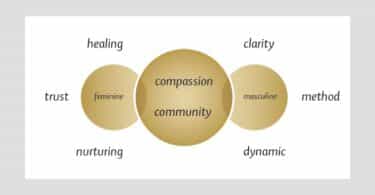Miasms form one of the cornerstones of Samuel Hahnemann’s teaching and practice of homoeopathy. This is only intended as a brief guide. A proper discussion on this would take several volumes and for much more on this, see the reading list at the end of this article.
What are they?
The word miasm comes from the Greek “Miasma” meaning defilement or pollution. It was later used to describe a cloud or fog of infectious or noxious material which may promote the development of a specific disease and was apparently used by Hippocrates to describe infectious diseases. Hahnemann’s idea, described in his “Chronic Diseases” of 1828, was that there were essentially three miasms : sycotic, syphilitic and psoric. They are involved in the predisposition towards certain diseases and the way in which we respond to those diseases. They may be caused by a maladaptation to an infectious agent from which we have not really recovered, or a suppression of that disease, driving the process of recovery from the disease, deep into the body and fundamentally changing the way in which we interact with our environment. This maladaptation may have occurred in our lifetime, or its effects may be inherited from immediate or distant ancestors. It may also be caused by a vaccination. Whilst Hahnemann initially only mentioned these three miasms, he did not rule out the development or existence of other miasms.
Hahnemann’s impressions were that miasms sat at the very seat of our beings and were the root cause of disease; all individual diseases being merely superficial and fragmentary manifestations of a single malignant force that may comprise one or more of these miasms. By examining the patient’s present and past history, it may be possible to determine which miasm is active, and deal with it via a single homoeopathic prescription, based on this broad totality.
Miasms may be either active or dormant (the level of dormancy being increased by a healthy lifestyle), and usually more than one resides in the host at one time. Homeopathically, it is the miasm which is uppermost in presentation that is normally dealt with first. There are specific groups of homoeopathic remedies that relate to the individual miasms and these may be found in the homeopathic repertory (such as Kent’s General Repertory), under the headings Psora, Sycosis or Syphilis.
The Principal Miasms
Sycosis
This miasm is associated with an excess, over-reaction or overproduction, and may be reflected by a predominance of disorders of the reproductive system. It is related to an initial gonorrhoeal infection in the patient or an ancestor, and medically is associated with genito-urinary, uterine, ovarian and arthritic diseases, appendicitis, sudden high fevers, sterility in women, warts, figworts and other epithelial growths. It may manifest as gout, carcinoma of the breast, diabetes, fibroids, rheumatoid disorders that are aggravated by heat, thickening of membranes, inflammation related to tissue infiltration, pathological hypertrophy of tissues, disorders of the pelvic and sexual organs, heart diseases better for mild exercise, tumors and haemorrhoids.
This theme of sycotic excess is often associated with discharges, strong sudden reactions and the need for excitement, stimulation and things such as short-term, high impact sexual encounters. Those suffering under the influence of this miasm are frequently slow to recover and suffer from relapsing disorders.
Mentally, there may be a fairly conservative outlook, moderate to extreme suspicion, secretive or mischievous behavior. There may be a tendency towards harming others and a capacity for cruelty and deceit. There is a preference for either hot or cold food, and meat tends to aggravate existing health problems. Most conditions are improved by discharges through mucous membranes and are better for menses, are aggravated by damp weather, are worse by the sea and worse after 2 or 3 am or during the day. The main remedies that relate to this miasm are Argentum, Kali sulph, Medorrhinum, Nat Sulph, Nit ac, Sepia, Staphysagria and Thuja. The principal remedy is Thuja and the nosode (the remedy associated with the disease related to the original miasm) is Medorrhinum.
Syphilis
This is associated with a breakdown, destruction of, or disorganisation of the person harboring the miasm. It is related to syphilis itself and is linked to pathology of the nervous system, blood and bones, and disorders of mucous membranes. It is also connected to some forms of heart diseases and some vesicular skin disorders as well as ulcerative conditions, dental decay, irregular dentition, and skin problems with glandular involvement. Diseases where the pathology is hidden or asymptomatic are often seen with this miasm.
In the mental sphere, fixed ideas and self-condemnation may be present, as may the feeling that one is harboring something dangerously wrong inside oneself, which may manifest as self criticism or guilt, and a fear of exposing one’s inner state to others and possibly violence. The feeling that danger lurks around every corner may lead to a fear of being attacked. These feelings, if taken to extreme, may lead to thoughts of suicide or homicide. Suspicion coupled with mental dullness may be present as well as alcohol addiction or depression.
There may be a preference for cold foods. Dairy foods may aggravate symptoms and there may be an aversion to meat. Most conditions are worse at night, may be worse for heat and may be ameliorated by discharges. The main remedies related to this miasm are Arsenicum, Aurum, Mercury, Nitric Acid, Phytolacca and Silica. The principal remedy is Mercurius and the nosode related to the miasm is Syphilinum (also known as Lueticum).
Psora
Associated with a deficiency or under-reaction, Hahnemann claimed that this miasm was responsible for most chronic diseases not caused by environmental toxins or faulty lifestyle, and that it arose from the suppression of scabies, leprosy or psoriasis. Hahnemann claimed that it was the first miasm and the one from which all others sprang. The word Psora comes from the Greek, “Tsorat”, meaning groove or stigma. Hahnemann had the view that Psora drains the vitality and lowers resistance, allowing the development of secondary diseases.
Most chronic diseases of a non-venereal nature (including those not covered by the Sycotic and Syphilitic miasms) may be related to this miasm. These include most skin diseases (every little scratch becomes infected), most psychological disorders not associated with venereal diseases, allergies and functional organ pathology, oedema, and functional cardiac disturbances. It may also manifest as cardiac disturbances arising from fear and other emotions, liver and blood vessel disorders, constipation, diarrhoea and intestinal parasites. Structural change associated with pathology is seldom seen in Psora and glands are rarely involved. Eruptions are itchy and resolve to dry scaly disorders.
The miasm may be associated with restlessness and hyperactivity, a heightened sensitivity to sounds and smells, and the person under its influence may be easily fatigued, may suffer from a fear of dying from heart disease, fear of the dark, fear of being robbed or of poverty, and fears in general. Anxieties and delusions are common, as is a feeling of hopelessness and feeling a lack of power or control. Psora may also make one feel as if there is never enough love, comfort or wealth in their life.
The Psoric is frequently hungry, has many cravings and desires for things such as sweets, hot food, sour foods and meats. Symptoms are often better for defaecation, worse after eating and, urination and perspiration. Symptoms are worse during daylight hours and until 9 or 10 PM, and worse after over-exertion. Remedies related to this miasm are Calc carb, Lachesis, Lycopodium, Phosphorous, Psorinum, Silica, Sulphur and other remedies that have seasonal symptoms as part of their proving picture. The principal remedy is Sulphur and the nosode for the miasm is Psorinum.
New and Acute Miasms
After Hahnemann’s description of these three principal miasms appeared, many more were described, most notably those related to tuberculosis or Pseudo-psora, and to cancer. Acute miasms also form part of this paradigm and are rapid in onset, involving a relatively short prodrome. They may be associated with ailments such as influenza, meningitis and cholera and are direct assaults upon the immune or humoral systems. Half acute miasms are also said to exist. These involve diseases with longer prodromes and may be related to diseases such as polio, ringworm or rabies.
Are they important?
Views are somewhat polarised on this issue. Many homeopaths will say that the application of the appropriate single remedy which covers the totality of symptoms will address whatever the body requires and that an evaluation of the patient’s miasmatic background is unnecessary. Some homeopaths are of the view that miasms are no longer important and unworthy of consideration. The other view, held particularly by those whose education was strongly influenced by the writings of James Tyler Kent, may say that this issue is critical in the management of the ills of all patients, and to ignore it is tantamount to neglect. Those in favor of a miasmatic approach may also say that any other form of management is suppressive and can lead to further chronic disease. Those who hold to neither position may reserve miasmatic management approaches for those patients who fail to respond to a well indicated remedy and others may routinely use the principal miasmatic remedy between doses of the simillimum.
Hahnemann said that we can never hope to eradicate miasms, but via the appropriate means diminish them back to a state of quiescence. At this stage there appears to be no correct path with this issue; any of the homeopathic practice methods mentioned above appear to produce results, although some may be more permanent than others. Ultimately, those who aim to remain true to Hahnemann’s dictates should include consideration of the miasms as part of a proper assessment of the totality of the patient’s presentation, and the appropriate prescription for that person’s ills.
Reading list:
Hahnemann S. Organon of Medical Art, 6th Edition
Hahnemann S. The Chronic Diseases, , New Delhi, IBPS, 182
Kent JT. Lesser Writings
Ortaga PS. Notes on the Miasms
Vithoulkas G. The Science of Homeopathy
Choudhary H. Indications of Miasm
Speight P. Comparison of the Chronic Miasms
Visit Robert Medhurst – BNat DHom – at his website :





